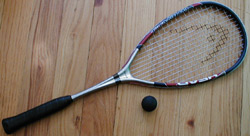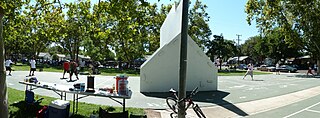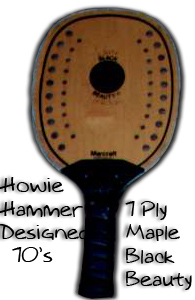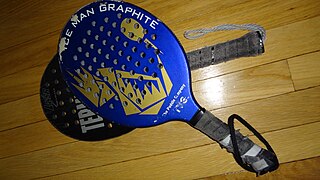| Year | Site | Champions and Hometowns |
|---|
| 1962 | Madison, WI | John Blanchieu and Maurice Rubin (Detroit, MI) |
| 1963 | Madison, WI | Bob and Dick McNamara (Minneapolis, MN) |
| 1964 | Flint, MI | Bob and Dick McNamara (Minneapolis, MN) |
| 1965 | Ann Arbor, MI | Harold Kronenberg and Galen Johnson (Eau Claire, WI) |
| 1966 | E.Lansing, MI | Harold Kronenberg and Galen Johnson (Eau Claire, WI) |
| 1967 | Bloomington, Ind. | Harold Kronenberg and Galen Johnson (Eau Claire, WI) |
| 1968 | Minneapolis, MN | Bud Muehleisen and Charlie Brumfield (San Diego, CA) |
| 1969 | Ames, IA | Bud Muehleisen and Charlie Brumfield (San Diego, CA) |
| 1970 | Fargo, N.D. | Bob and Bernie McNamara (Minneapolis, MN) |
| 1971 | Flint,MI | Craig Finger and Paul Lawrence (Ann Arbor, MI) |
| 1972 | Knoxville, TN | Evans Wright and Dan Alder (East Lansing, MI) |
| 1973 | Eau Claire, WI | Evans Wright and Dan Alder (East Lansing, MI) |
| 1974 | Ann Arbor, MI | Steve Keeley (San Diego, CA) and Len Baldori (East Lansing, MI) |
| 1975 | Livonia, MI | Dick Jury (East Lansing, MI) and R.P. Valenciano (Flint, MI) |
| 1976 | Flint, MI | Steve Keeley (San Diego, CA) and Andy Homa (Williamston, MI) |
| 1977 | Ann Arbor, MI | Dick Jury (Williamston, MI) and R.P. Valenciano (Flint, MI) |
| 1978 | Portage, MI | Dick Jury (Williamston, MI) and R.P. Valenciano (Flint, MI) |
| 1979 | East Lansing, MI | Dick Jury (Haslett, MI) and R.P. Valenciano (Flint, MI) |
| 1980 | Ann Arbor, MI | Bob Sterken (Ann Arbor, MI) and Greg Grambeau (Ann Arbor, MI) |
| 1981 | Flint, MI | Andy Kasalo and Andy Mitchell (Kalamazoo, MI) |
| 1982 | Kalamazoo, MI | Steve Wilson (Flint, MI) and Kevin McCully (Ann Arbor, MI) |
| 1983. | Midland, MI | Andy Kasalo and Andy Mitchell (Kalamazoo, MI) |
| 1984 | Dearborn, MI | Andy Kasalo and Andy Mitchell (Kalamazoo, MI) |
| 1985 | Pontiac, MI | Andy Kasalo (Calumet City, IL) and Andy Mitchell (Ft. Wayne, IN) |
| 1986 | Dearborn, MI | Andy Kasalo (Calumet City, IL) and Andy Mitchell (Ft. Wayne, IN) |
| 1987 | Dearborn, MI | Andy Kasalo (Calumet City, IL) and Andy Mitchell (Kalamazoo, MI) |
| 1988 | Portage, MI | Andy Kasalo (Calumet City, IL) and Andy Mitchell (Kalamazoo, MI) |
| 1989 | Southgate, MI | Andy Kasalo and Andy Mitchell (Kalamazoo, MI) |
| 1990 | Canton, MI | Andy Kasalo and Andy Mitchell (Kalamazoo, MI) |
| 1991 | Taylor, MI | Andy Kasalo and Andy Mitchell (Kalamazoo, MI) |
| 1992 | Lansing, MI | Andy Kasalo and Andy Mitchell (Kalamazoo, MI) |
| 1993 | Eau Claire, WI | Andy Kasalo and Andy Mitchell (Kalamazoo, MI) |
| 1994 | Midland, MI | Andy Kasalo and Andy Mitchell (Kalamazoo, MI) |
| 1995 | Kalamazoo, MI | Andy Kasalo and Andy Mitchell (Kalamazoo, MI) |
| 1996 | Davison, MI | Andy Kasalo and Andy Mitchell (Kalamazoo, MI) |
| 1997 | Eau Claire, WI | Andy Kasalo and Andy Mitchell (Kalamazoo, MI) |
| 1998 | Davison, MI | Mike Wisniewski (Bay City, MI) and Mike Czabala (Ann Arbor, MI) |
| 1999 | Eau Claire, WI | Andy Mitchell and Andy Kasalo (Kalamazoo, MI) |
| 2000 | Kalamazoo, MI | Andy Mitchell and Andy Kasalo (Kalamazoo, MI) |
| 2001 | Midland, MI | Andy Mitchell and Andy Kasalo (Kalamazoo, MI) |
| 2002 | Bloomingdale, IL | Mike Czabala (Los Angeles, CA) and Mike Wisniewski (Bay City, MI) |
| 2003 | Eau Claire, WI | Andy Mitchell and Andy Kasalo (Kalamazoo, MI) |
| 2004 | Bloomingdale, IL | Kelly Gelhaus and Steve Lerner (Riverside, CA) |
| 2005 | Riverside, CA | Kelly Gelhaus and Steve Lerner (Riverside, CA) |
| 2006 | Ann Arbor, MI | Kelly Gelhaus and Todd Entriken (Riverside, CA) |
| 2007 | Riverside, CA | Kelly Gelhaus and Todd Entriken (Riverside, CA) |
| 2008 | East Lansing, MI | Mike Wisniewski and Chad Krager (Bay City, MI) |
| 2009 | San Diego, CA | Mike Orr (San Diego, CA) and Todd Entriken (Riverside, CA) |













